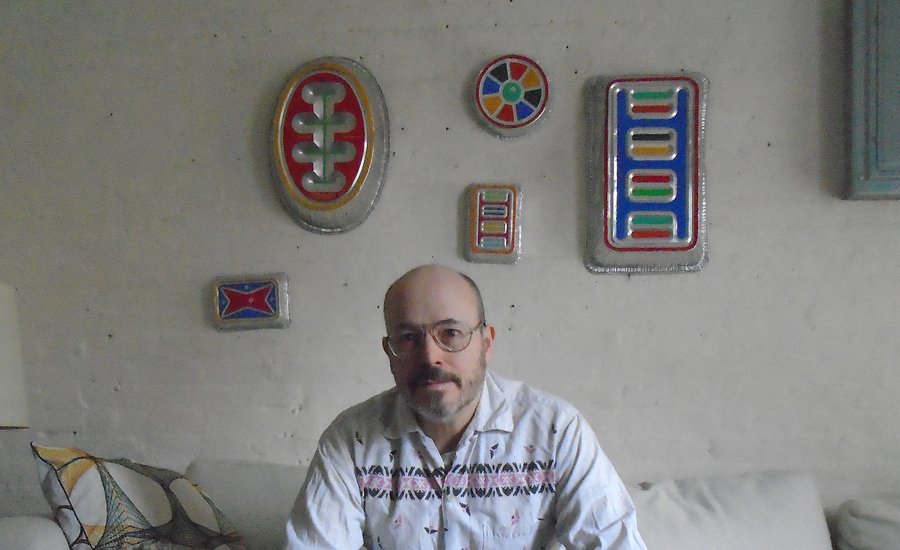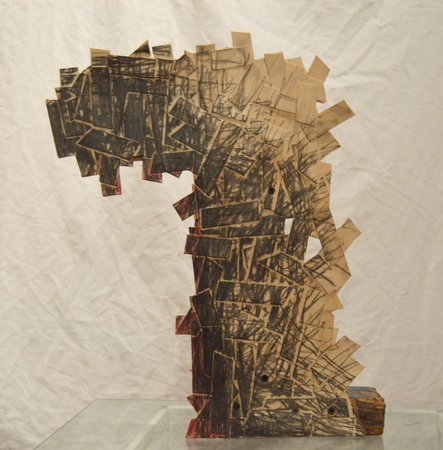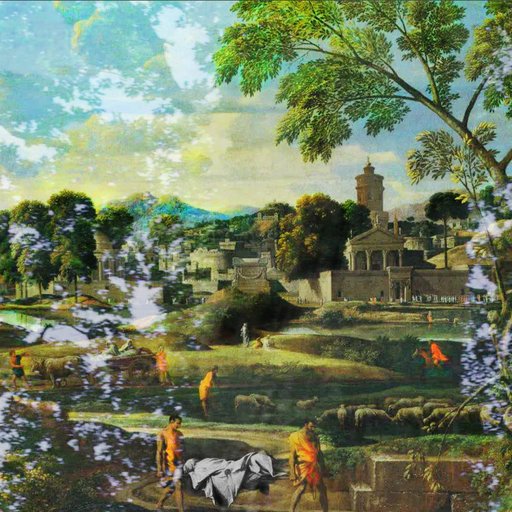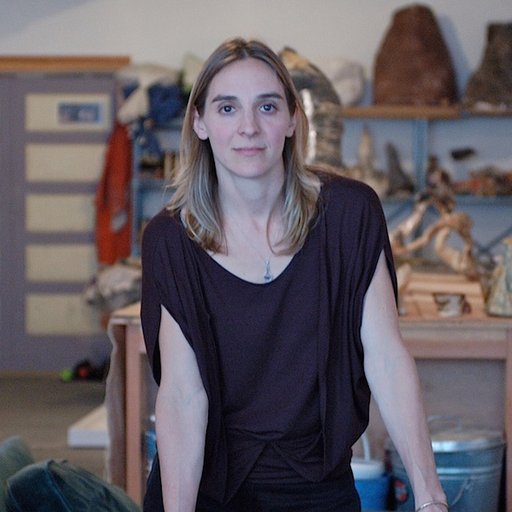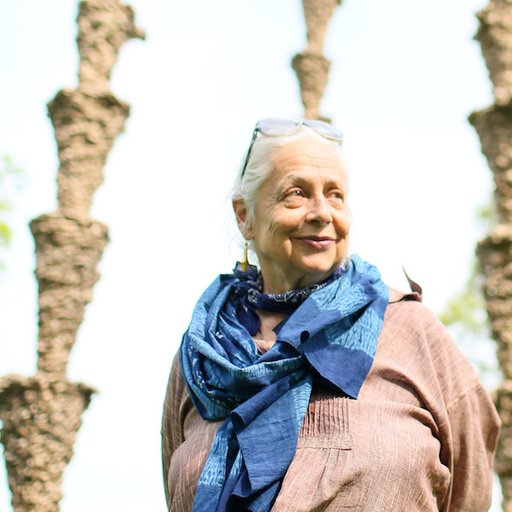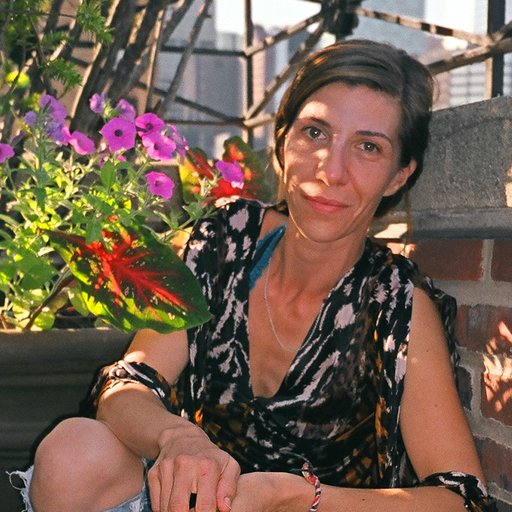Best known for his pipe cleaner constructions and immersive, heavily patterned installations that borrow as much from DIY design as they do the history of modern art, the New York artist Lucky DeBellevue has a penchant for humble materials that extends to the rubber stamps, wood veneer, and pistachio shells of his more recent work. He’s also an arts organizer of a sort, bringing together a bevy of around 50 artists including Joshua Abelow, Jackie Saccoccio, and Wade Guyton under the auspices of Foundation Barbin (his curatorial platform) for a massive group show at Kai Matsumiya Gallery, on view through February 5th.
Artspace’s Dylan Kerr caught up with DeBellevue find out more about his ad hoc approach to art making.
What led you to become an artist?
Initially, escapism, probably.
You first made a splash with your sculptures of chenille stems—better known as pipe cleaners—but you’ve recently shifted into semi-geometric patterned paintings and sculptures. What prompted this shift? And where do the pistachio shells come from?
The shift was an organic one, but took some exploration before I think I arrived somewhere else with my work. Making the chenille stem sculptures could be very labor intensive, and it took a lot of commitment to make the larger works. At some point I realized I reached the end of exploring ideas with that material, and my hands thanked me for it. But never say never, and I am not against revisiting that material in the future. I was ready to not rely on what I already knew, so I started making lots of prints on paper, which was fun, helpful, and not so serious.
The idea of using pistachio shells started in Rome. I was there for almost a year at the American Academy, 10 years ago. I didn’t make as much work as I hoped, but realize now it was more about taking things in. For some reason I brought pistachio shells back with me. I thought, “I’ll use these one day.” Why I needed to bring those shells home, I don’t know. I thought using the shells as material in artworks was kind of dumb and embarrassing—that’s usually a sign for me to go with it.
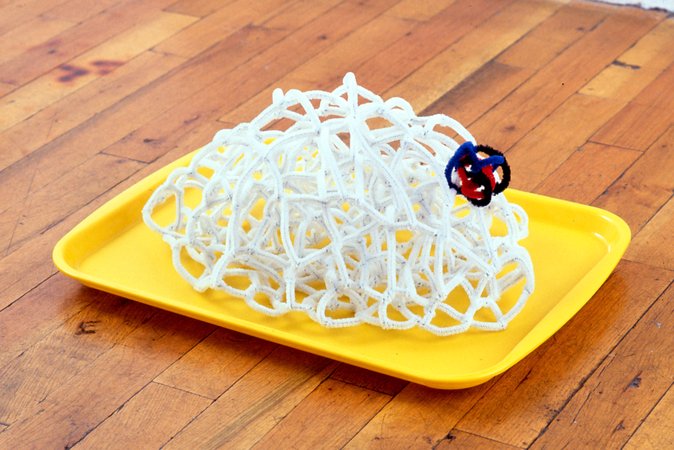 Was a Part of Cancer Society, 1997
Was a Part of Cancer Society, 1997
What was the last indispensable show you saw?
“High Times, Hard Times: New York Painting, 1967-1975” at the National Academy Museum in 2007 seems to fit the indispensable bill for me. Lots of interesting work in this show, with the artists exploring what constitutes a painting. A lot of the work was very object-like and sculptural, which might be more the norm now, but not then. It was a nice window into the way artists were working, with a certain approach to materials that did not neatly fit into other genres of the time.
Who are some contemporary artists you follow or are friends with?
As far as my artist friends, I realize that many are encompassed in two exhibitions. The first is “New York Projects,” which was at Deflina in London in 2000. It was curated around a social group of artists, and being in it was kind of like being in a band on tour, with everyone living at the residency and making work for the exhibition and having a good time, for the most part anyway. Many of those artists are in the show that I organized at Kai Matsumiya Gallery that just opened, entitled "Redeux (Sort of)" under the umbrella of my Foundation Barbin. Besides those artists, many of my newer artist friends are included in this show.
What is your perspective on the art market?
The art market will always be with us. I have been around long enough to see a few mini-eras in the art world. It seems like there are short periods where the focus is about certain aspects of the art world: gallery owners for a while, or curators, or painters, or people doing text and photo conceptual work who were in the Whitney program. Now it seems to be about collectors and the market. Hopefully this too will pass, and there will be a shift in interest to something other than how much an artwork sold for at auction.
When it comes to making art, what does cheating look like?
There’s that quote that is supposed to be by Picasso, “Good artists borrow, great artists steal.” OK, go ahead and steal or appropriate, but if you don’t somehow make it yours in the process, then I think that’s cheating. And usually boring.
How do you approach your signature materials—pipe cleaners, pistachio shells, wood veneer, rubber stamps—when it comes to your art making? Are you elevating these quotidian materials to the realm of fine art, or is there something else that attracts you to them?
It’s a little bit of elevating these materials to a high art context, but also just using what is around, what one comes across during one’s day, and what interests you as a “thing” in its own right. It’s a horizontal exploration—I'm not so concerned with hierarchies.
I also like that these materials are part of a whole, yet hold their own. The wood veneer used in a cross hatching way creates a form, and each piece makes its mark. I'm interested in the way an object printed on a surface announces itself, and is an echo of the thing that made it. The shells are natural readymades, referencing something we do every day, eating, a marker of time. Archival, I think, but so what if not? They are all vehicles to get somewhere.
What historical period does your mind keep returning to and what do we have to learn from it?
I keep returning to Weimar Germany—not only because of the art from that time, but also for the whole culture that was forming as a result of different forces. A very progressive time came into being, and then was annihilated. It's a cautionary tale about being aware and not taking things for granted.
What is the biggest challenge facing artists today?
Climate change? Other than that, not having enough money. Or, in certain cases, too much. Sometimes I think it can be good to have to work within limitations.
What are you working on now?
More exploration and building on processes I’m interested in. I’d like to finish some found books pieces that involve printing and collage, which seems to take a long time. I’m doing a lot of thinking about installations for possible exhibitions that are in the works. I’m considering using hay bales as pedestals, or as part of sculptures, but we’ll see.











